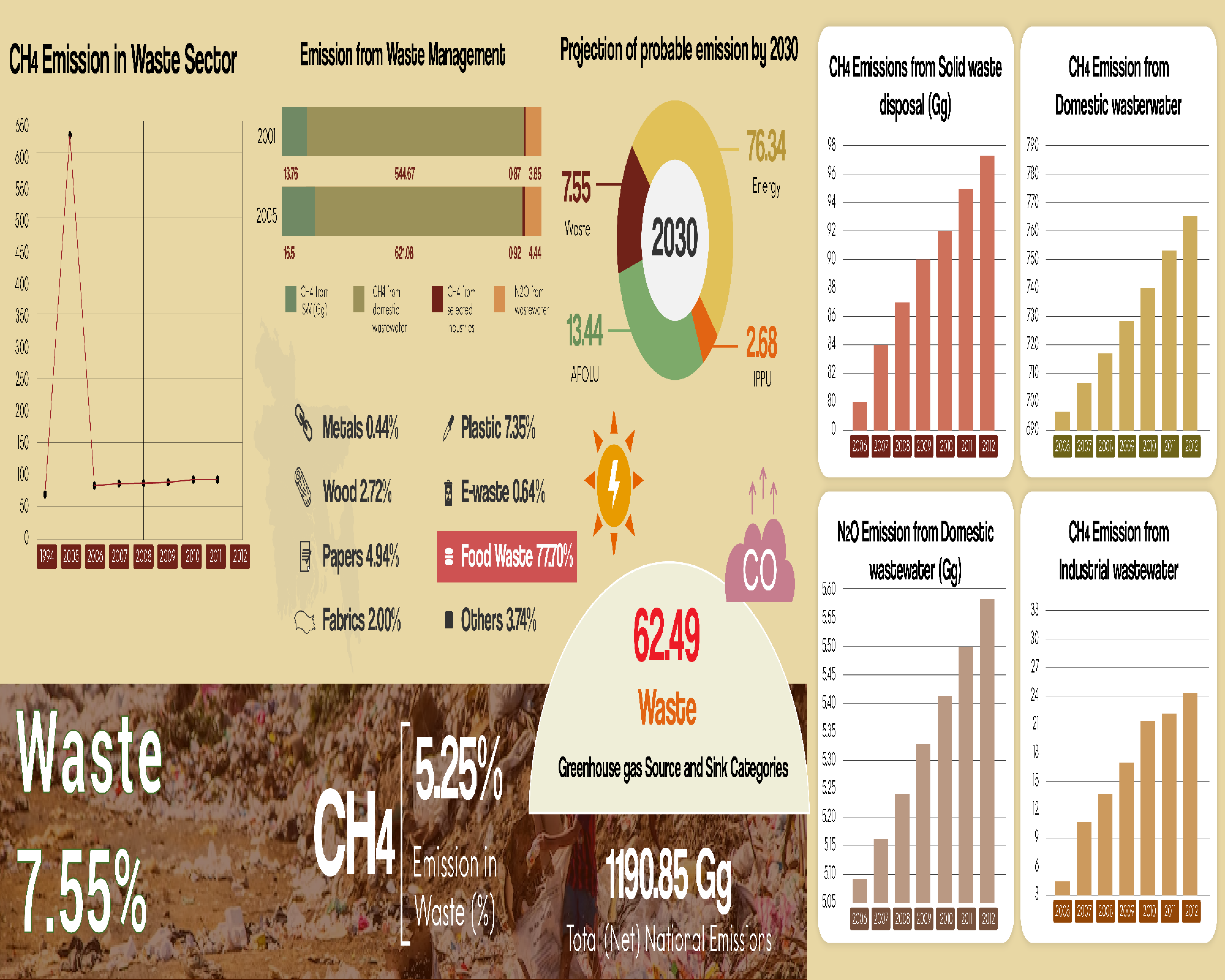
Waste Sector
Waste
The Waste sector covers methane emissions from solid waste disposal and domestic wastewater. The current GHG emission of this sector is 7.55% (Source: Overview of Bangladesh’s NDC at COP26, 2021). BAU is prepared based on the extrapolation of waste generation using urban population estimates (UN data) and waste generation rate (Third National Communication) in the Waste sector.
The total amount of waste generated every day in Bangladesh has been increasing annually since 1991. Whereas in 1991 the urban areas of Bangladesh generated approximately 6,493 tons per day of municipal solid waste, by 2005 that figure had more than doubled to reach 13,330 tons per day. In 2014, it is estimated that Bangladesh generated 23,688 tons per day in its urban areas. At the same time, the total urban population of Bangladesh increased from 20.8 million in 1991 to 32.76 million in 2005 and to 41.94 million in 2014. It is estimated that the total urban population will be as high as 78.44 million by 2025, and the total waste generated is expected to reach 47,000 tons per day. There is an obvious link between a larger urban population and greater amounts of waste generated. Interestingly, since 2005, the rate of change of total waste generated daily has exceeded the rate of population growth, due to an increased average daily per capita waste generation rate.
2006 IPCC Guidelines for National Greenhouse Gas Inventories - Volume 5 (Waste)
National Greenhouse Gas Inve
Reports
Emission Estimates Waste Sector
You can download an Excel file of the data here
Click the link below for Emission Estimates from :
Waste Sector Report 001 Waste Sector Report 003 Waste Sector Report 004 Waste Sector Report 002



